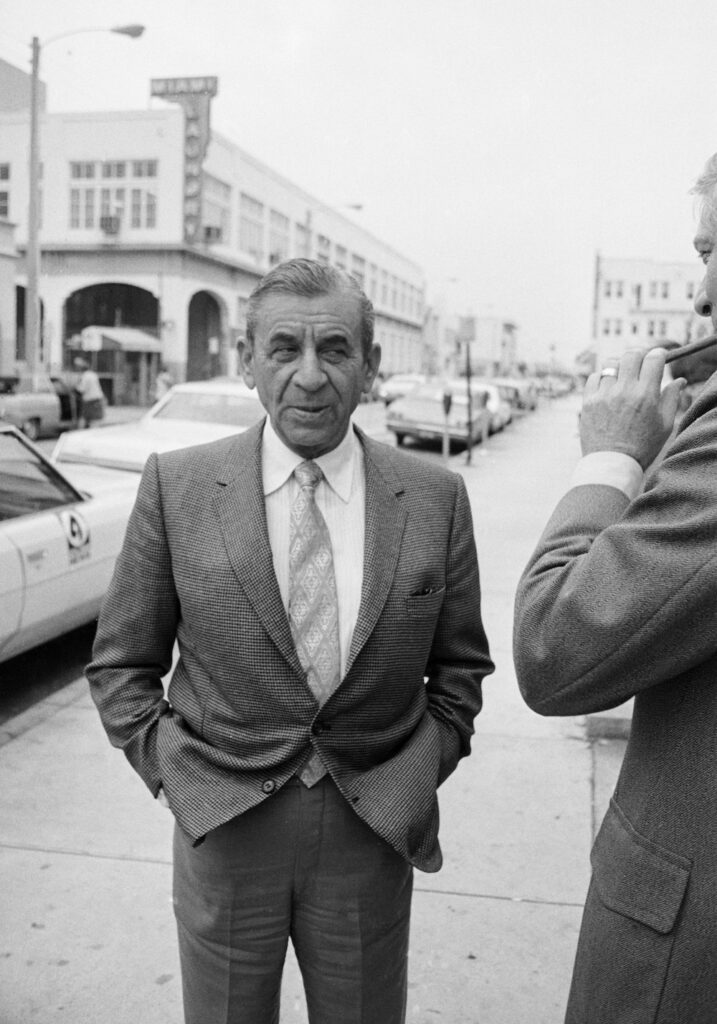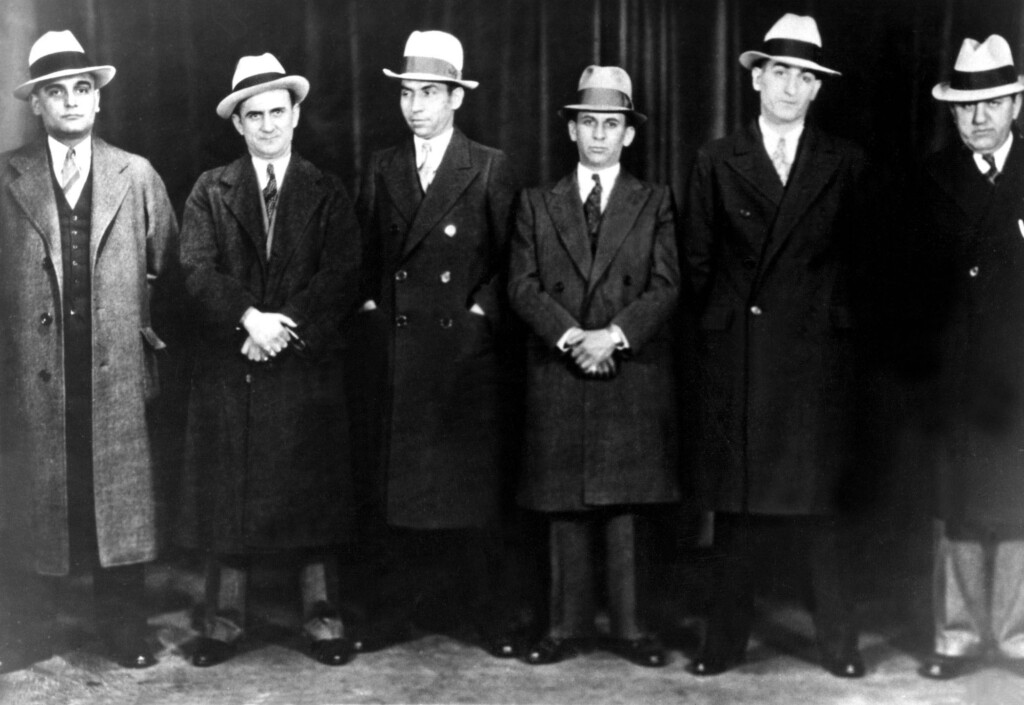As a culture, our thirst for true crime is unquenchable. While all feature colorfully unsavory characters, each contains something specific for every interest. Murder stories have mystery; cult stories seem out of this world. And mafia stories have math — or, at least, the tale of Meyer Lansky does.
Largely considered to be the mob’s accountant, whom The New York Times once referred to as the “financial wizard of organized crime,” Lansky headed up a criminal enterprise that extended as far as Cuba, and had long-standing friendships with the likes of Lucky Luciano and Bugsy Siegel. But where his counterparts met untimely, work-related deaths (it’s a risky business), Lansky lived to the ripe old age of 80, retiring in Florida with hundreds of millions of dollars allegedly hidden away.
Born Maier Suchowljansky in 1902 in what is now Belarus, Lansky immigrated with his family to New York in 1911, settling on the Lower East Side. What he lacked in stature — he stood at only five feet, four inches tall — he more than made up for with brains. Lansky was notably a good student, especially when it came to math. But these skills didn’t save the adolescent from falling in with a bad crowd.
Lansky befriended Siegel in his teens and the two began running dice games. With illegal activities now on the table, the pair’s money-making options grew. They resold stolen cars, helped bootleggers camouflage their vehicles, and got into bootlegging themselves — which is possibly how they were introduced to Luciano.
The duo eventually founded the Bugs and Meyer Mob, which, in addition to rum-running, provided violent goons for hire. At some point, Lansky was introduced to Arnold “The Brain” Rothstein (the man credited with organizing crime in the first place), who saw the young man’s potential as a protégé, and helped guide him in the underworld.
Lansky followed in Rothstein’s footsteps by focusing his business on odds-based gambling. His understanding of probability and how the house always wins meant that he could successfully run “clean” games — ones that weren’t rigged — and still turn a profit. This made him trusted among gamblers, and, thanks to his reputation, they flocked to his casinos in the New York area.
As the ’30s progressed, so too did Lansky’s gambling operation. He expanded across the state, out to Newark, and went as far south as Cuba and the Bahamas. Meanwhile, he teamed up with Luciano to further evolve the mafia from small warring groups to a national syndicate. This became a major step to the New York crime families opening hotels and casinos in Las Vegas. In Nevada, money laundering and nefarious schemes could be hidden under legal gambling and hotel enterprises, as well as a thick layer of glamor provided by celebrities such as Dean Martin and Frank Sinatra.

Photo by Bettmann/Getty ImagesThe development of Las Vegas as a glittering vacation destination is one of many quirks in Lanksy’s career. A life of crime wasn’t only lucrative, it also led him down some strange paths. For example, during World War II, Lansky helped set up a deal between Luciano (then in prison) and the United States Navy to help guard New York’s docks, and weed out possible under-cover enemies. In exchange, Luciano was released from prison and deported back to Italy — where he was able to resume running his businesses. It would not be the only time that global politics had a direct impact on Lansky’s dealings.
Thanks to a friendly relationship with Cuban dictator Fulgencio Batista, Lansky was able to open hotels and casinos in Cuba, raking in millions of dollars in profits from gambling and tourism — all of which vanished the moment Fidel Castro and his revolutionaries rolled in. The hotels were seized, casinos were smashed and looted, and, in 1960, gambling was made illegal in the country. To this day, Lansky’s heirs are trying to get compensation for the loss of the Riviera hotel, one that he was particularly proud of. “It was a great spot,” Lansky’s grandson, Gary Rapoport, told CNN in 2016. “Any businessman would be terribly crushed if someone just came along and took it.”
Despite being more business-minded than most of his peers, it didn’t change the fact that Lansky was ultimately a criminal. And while he was generally more low-key in his endeavors, law enforcement kept a close eye on him. Lansky’s only real stint in jail was when he was nabbed for running a gambling operation in Saratoga Springs, New York, in 1953. But, in 1970, he faced a far more damning case which threatened to bring him down for a number of crimes, including tax evasion. He fled to Israel, citing the country’s “Law of the Return” for Jews, which created a diplomatic mess.
“The episode posed a dilemma for the Israeli government,” The New York Times explained in Lansky’s obituary. “Had it allowed him to stay, it would have been criticized for harboring a reputed criminal. And when it asked him to leave, it was criticized for turning away a Jew who had asked for refuge.”
After two and a half years, Lansky was forced to return to America, and was arrested upon his arrival in Miami. But, in the end, all charges were dropped due to his declining health. Lansky died in Miami in 1983, at the age of 80, from lung cancer. It makes him one of the few top mafiosos who didn’t succumb to occupational hazzards. But even in his final years, Lansky maintained a shining business sense. It is assumed that he passed away with upwards of $300 million stashed away in bank accounts around the world, though authorities have never found a dime.
Like many mid-century mobsters, Lansky’s legacy has been immortalized by Hollywood, but arguably no film or television show has captured his most fascinating quality: his mind. True crime stories are at their best when covering anomalies, things regular readers can take solace in knowing they likely won’t ever have to encounter. The unlikely tale of Meyer Lansky is surely one of the finest of the genre.


